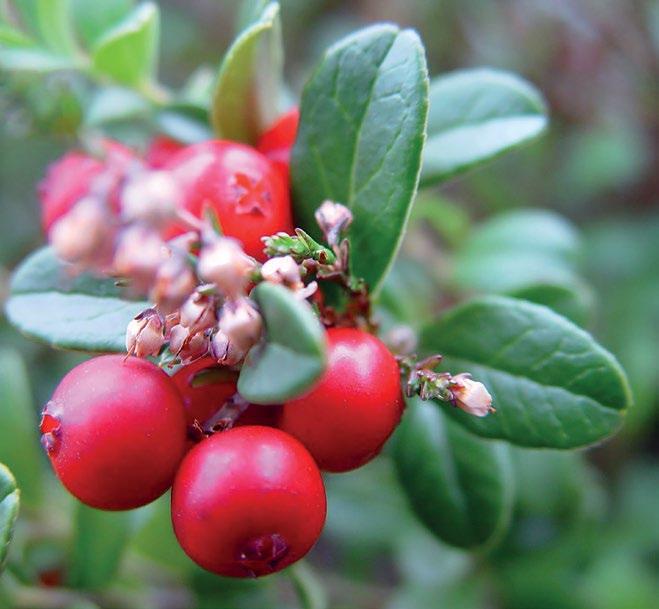
4 minute read
Superfood
from My Lombok issue 54
by mylombok
Name That Fruit: Buah Buni
What’s in a name? Well, quite a lot, in fact.
Advertisement
You're looking at a bowl of oval-shaped, berry-like fruits. Some are white, with a pinkish blush. Some are red. Some are darker – almost black.
The plant they grow on is sometimes called a current tree, but they’re not red, or black currants. Sometimes it’s called a salamander tree. Your guess is as good as mine on that one.
The fruits are also known as Herbert River cherries, Queensland cherries, and even wild cherries. But they’re not cherries either. You might even find them referred to as Chinese laurel fruit, but that’s misleading too, because most laurel berries are toxic, and these pretty little fruits are definitely not.
Give up?
Their Latin name is antidesma bunius, and they are called buah buni, also known as buni fruit, or boni, in Indonesia, and as bignay or bugnay in the Philippines. In Australia, some indigenous peoples of Queensland call the fruit chunka.
Buni fruit trees grow throughout Indonesia and the Philippines, in warm, humid areas of China, India and Southeast Asia, and in northern Australia. The trees can grow up to 30 metres high, and although most are planted for their fruit, they are also used as ornamental garden trees.
BUNI FRUIT
The small fruits, which are available throughout the year, are about the size of grapes and gradually take on deeper colour during the ripening process. This happens at different rates, which is why, at any given time, a cluster will have about 30 fruits of several different colours.
They have a sturdy skin, and although the flesh inside is pale, also like a grape, the juice can leave a deep red stain. Each individual fruit contains one hard seed.
Buni fruit has been around for centuries. People have collected them from wild trees, or cultivated them at home. They are used as a food and also as a way to better health.
A TASTE OF BUNI?
Although the fully ripe fruit could be described as sweet, they often have a definite sharpness, or tartness. They can certainly be eaten fresh, straight from the tree.
A favourite way to use buni fruit in Indonesia is to add it to a rujak buah – a mixed fruit salad. It is delicious when combined with the contrasting tastes and colours of green mango, water apple, green papaya and star fruit, and served with chopped peanuts and a spicy sauce.
For savoury dishes, buni fruit are ideal ingredients to use when preparing a sweet and sour dressing, especially for fish and chicken, or in a multi-purpose sauce, blended with sugar, chillies, shrimp paste and salt.

The leaves are also useful. They are added to vegetables dishes and meat or fish stews, and shredded to give a sharp burst of flavour to rice and salads.
The fruit juice opens up even more possibilities – as a sour taste experience, or sweetened with cane sugar. It occasionally appears in jams and jellies. Some chefs are keen to use buni to experiment with preserves, sorbets and toppings for ice cream. Those in the know talk about superb buni jelly, which is difficult to get to the right consistency, and therefore hard to find.
There are reports it is a superb addition to a tropical cocktail, and has even been fermented to make wine, liqueur and brandy.
This little fruit might well be ‘ripe’ for commercial exploitation.
BUNI FRUIT FOR GOOD HEALTH
Buni fruit contain vitamin A, vitamins B1, 2 and 3 (thiamin, riboflavin and niacin) vitamin C, calcium, phosphorus and iron. They are high in antioxidants and in anthocyanin, the compound that produces their reddish-purple colour.
The leaves and fruit are edible, but it should be noted that the bark contains toxins.
Studies have suggested that buni fruit could even have a positive impact on blood glucose levels, which might be an added benefit for people with diabetic conditions.
In traditional medicine practices in Indonesia and the Philippines, buni fruit and its juice have been used to treat gastric intestinal upsets, and anaemia. Because of its antioxidant properties, buni is said to improve skin conditions, and might also support those living with heart disorders, by contributing to the health of the blood vessels. Tea made from buni or bignay fruit or leaves is popular in the Philippines, Thailand and Singapore, and drunk for its health benefits for the liver and digestive system.
Buni fruit is high in vitamin C, and is sometimes used as a local remedy for some types of hypertension. This is backed up by research. According to a 2020 study, 'Vitamin C supplementation resulted in a significant reduction of blood pressure in patients with essential hypertension' (hypertension without a secondary cause).
Because of their tendency to promote sweating, buni leaves are sometimes used, in parts of Asia, to treat snakebites. Using a fruit as a remedy or a health supplement should always be done in consultation with a medical practitioner. In the end the name says more than it means to….
For this little fruit, it’s all bun (Romanian), baik (Indonesian) bon (French), bene (Italian), and bueno (Spanish). It all sounds like buni, and it all means good.



STAY

Kuta Sunrise Villa Hotel Lumi









